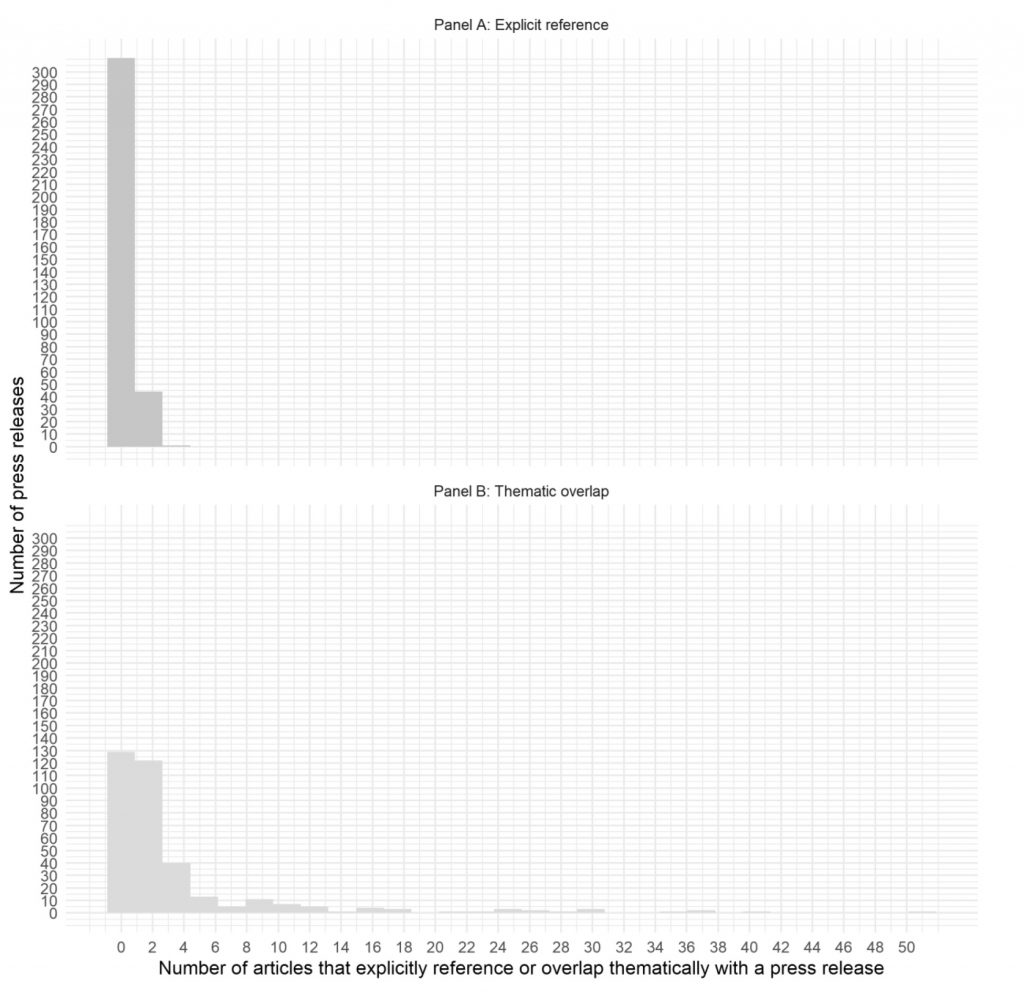Most media outlets ignore press releases issued by policy advocates. Anne Skorkjær Binderkrantz, Carsten Jensen, Henrik Seeberg and Massimo Graae Losinno traced the effects of releases from major interest groups. They rarely identified a direct link to news stories, and often struggled to find any news stories about the topic at all
Every day, policy advocates draft careful press releases for news agencies and outlets. For lobby organisations, this press-directed work is a central part of the action repertoire. These organisations routinely try to influence who gets into the news, what issues are on the media agenda, and how news stories are framed. However, what we do not know is to what extent these efforts are successful. Do press releases end up as news stories or in the ‘deleted’ folder?
Our research set out to investigate this. Much progress has been made in mapping the media efforts as well as the media coverage of policy advocates such as interest groups, think tanks and private corporations.
Do press releases spring from reporters' independent efforts, or are they influenced by messaging from policy advocates?
Less attention has been devoted to connecting media efforts to media coverage. This is a crucial question because it speaks to the dynamics governing the news coverage of politics. To what extent are news stories the result of the independent efforts of reporters? How far do they reflect the input reporters receive from policy advocates? The answers to these questions can also shed light on whether some political actors are more successful than others in pushing their issues into the news.
We searched for traction in the news media of 356 press releases issued by five major Danish interest groups. We deliberately selected prominent groups such as the main trade union, major business groups and local authority associations. Our study analysed all press releases each group issued during a full year, searching for related news stories in five major newspapers.
To ensure that we did indeed find relevant news stories, we used a variety of strategies. First, we searched for relevant keywords from the press release in news stories. Second, we used two more automated approaches, searching for matching topics in news stories and an overlap in the specific words used in a press release and in news stories.
These techniques allowed us to look for various signs of an impact. Say a business organisation issues a release calling for the lowering of corporate tax rates. Do newspapers write stories about corporate taxation (the keywords connection)? Or, do they copy and paste parts of the content of the press release (the word-overlap connection)? Interestingly, we discovered that the classic keyword search was the most efficient strategy for identifying relevant articles.

Despite the large number of fishing lines our research threw into the water, we caught very few fish. Our analysis suggests painfully low success rates for interest group press releases. For more than 300 of our 356 press releases, we failed to find any subsequent news story with an explicit reference to the release. Fewer than 10 had more than one reference.
Media outlets failed to reference 84% of press releases in our analysis of subsequent news stories
If we look a bit more broadly at news stories about the same topic, but without explicitly referencing the press release, we find more connections. But even here, many press releases did not show any overlap with news stories. Our results are particularly noteworthy because we selected major interest groups and used an inclusive, diverse strategy to search for news stories.
Does this mean that policy advocates are unable to affect the media? Not necessarily. Press releases are just one of the tools in the repertoire of media-directed tactics. Groups may have more leverage by, for example, approaching reporters directly. If direct contacts are effective, this might be an avenue for resourceful groups to gain media traction. Issuing press releases is a relatively inexpensive tactic, while resources and existing networks are likely to be more important for maintaining such direct contacts.
Even the most prominent interest groups cannot simply issue a press release and expect reporters to react
In the interplay between reporters and their sources, our results indicate that interest groups do not have the upper hand. Even the most prominent interest groups cannot simply issue a press release and expect reporters to react. Yet, these groups regularly appear in the news. As noted, this may be related to other types of media efforts than press releases.
It could, however, also indicate that groups appear mainly upon invitation from the media – that is, when reporters reach out to groups rather than the other way around. This channel may be unrelated to press releases or other types of press efforts by groups. However, it still allows interest groups a considerable footprint in the media.
Why do interest groups issue so many releases if it does not bring them into the news? There may be three explanations.
First, they may sincerely want to get into the news. By definition, this will never happen if they do not try.
Second, the real targets of press releases may not be reporters, but rather group members and supporters. By issuing press releases, groups can show their members that they are actively trying to further members' interests.
Finally, most major interest groups have large professional secretariats. Communication units in groups may use press releases to demonstrate their worth and thus justify their budgets. In other words, interest groups may be subject to the same logics as other bureaucratic organisations.
No matter the reason, our study calls for a more critical approach to studying interest group influence on the media.